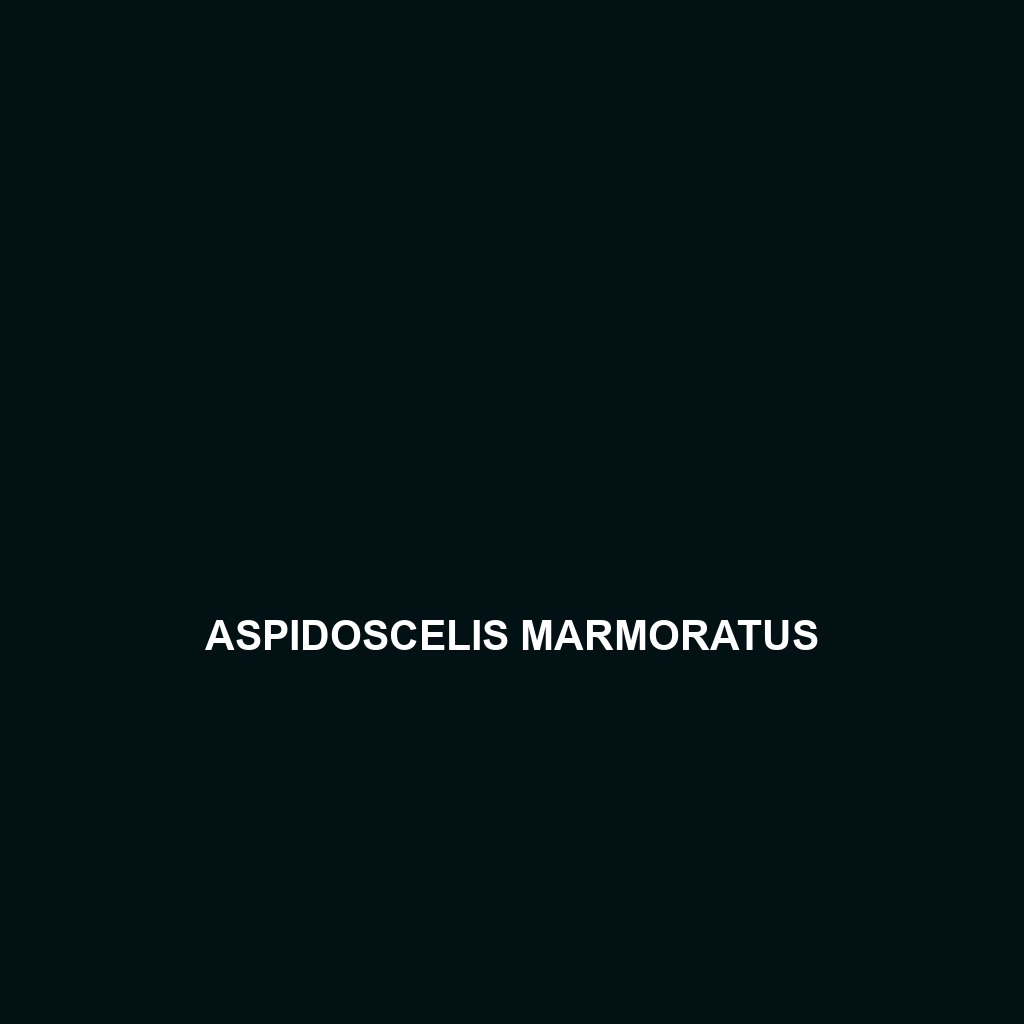Aspidoscelis marmoratus Overview
Common Name: Aspidoscelis marmoratus
Scientific Name: Aspidoscelis marmoratus
Habitat
Aspidoscelis marmoratus, commonly known as the marbled whiptail lizard, is primarily found in arid and semi-arid regions of the southern United States and northern Mexico. This species thrives in a variety of habitats, including scrublands, grasslands, and open forests. They prefer sandy or rocky soils that provide excellent burrowing opportunities and basking spots.
Physical Characteristics
The marbled whiptail averages between 20 to 25 centimeters in length. They are characterized by their slender bodies and long tails, which can be up to twice the length of their bodies. Their color ranges from beige to brown, with distinctive darker marbling or stripes that provide effective camouflage against predators. Their smooth scales and elongated limbs contribute to their agile movements.
Behavior
Aspidoscelis marmoratus is primarily diurnal, engaging in activities such as basking in the sun and foraging for food during daylight hours. They are known for their rapid movements and can often be seen darting across the ground or climbing on low vegetation. These lizards exhibit territorial behavior, especially during the breeding season, where males will display to attract females and ward off rivals.
Diet
The diet of Aspidoscelis marmoratus is primarily insectivorous, feeding on a variety of insects such as crickets, ants, and beetles. They also consume other small invertebrates, allowing them to maintain a balanced diet that supports their active lifestyle. Their opportunistic feeding habits enable them to thrive in diverse environments where food sources are available.
Reproduction
Breeding in Aspidoscelis marmoratus typically occurs in the spring and summer months. Females lay a clutch of 2 to 12 eggs in shallow burrows, where the eggs incubate for approximately 6 to 8 weeks before hatching. Offspring are miniature versions of adults and are independent from birth, which enhances their chances of survival in the wild. Mating often involves elaborate courtship displays, which include head bobbing and tail waving.
Conservation Status
Although Aspidoscelis marmoratus is currently classified as “Least Concern” by the IUCN, habitat loss and degradation pose potential threats to its populations. Conservation efforts are important to ensure this species remains stable, particularly in areas facing significant environmental changes.
Interesting Facts
A notable fact about Aspidoscelis marmoratus is its parthenogenetic reproduction in some populations, meaning females can reproduce without male fertilization. This unique reproductive strategy allows for rapid population growth in suitable habitats, contributing to their resilience in challenging environments.
Role in Ecosystem
Aspidoscelis marmoratus plays a crucial role in its ecosystem as both predator and prey. By controlling insect populations, they contribute to the health of their habitat. Additionally, they serve as a food source for various predators, including birds of prey and snakes, thus forming an integral part of the food web.
